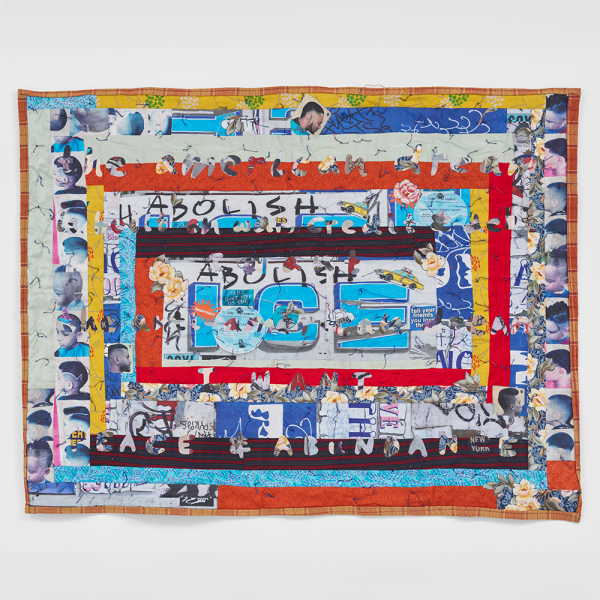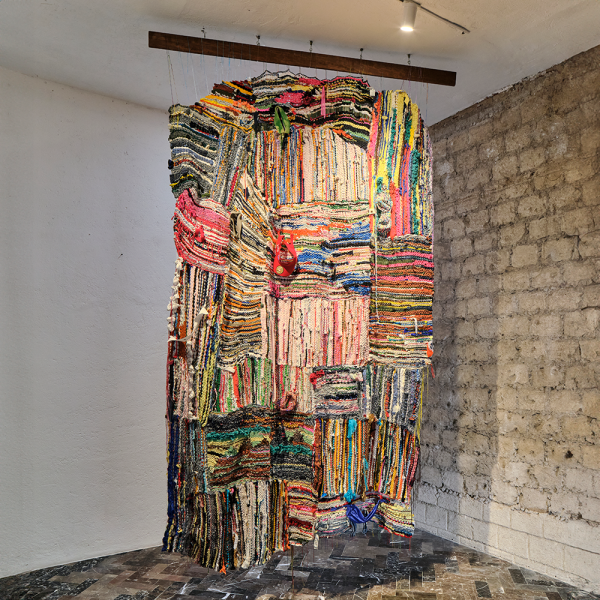The Queue: Cassandra Mayela
The Queue: Cassandra Mayela
Cassandra Mayela’s meaningful tapestries tell the stories of Venezuelan migrants.
Cassandra Mayela left Isla de Margarita, an island off the coast of Venezuela, for New York in 2014, one of more than 7.5 million Venezuelans displaced by economic and political turmoil in her home country. Since 2021, for her Maps of Displacement series, she has been weaving stories of displacement and migration from the clothing and mementos of her fellow migrants, interviewing more than 200 people and meticulously cataloging their donated items and fabric. Mayela is a lifelong artist—she used a loom for the first time as a curious 9-year-old. In her current work, she weaves together strips of fabric on a stretcher-frame-turned-loom belonging to her husband, painter and writer Basie Allen. M. Ferreira Vogel wrote about Mayela’s powerful textile works and creative practice in “Weaving Their Stories” in the Fall 2024 issue of American Craft.

Peace and Abundance, 2024, dye sublimation on repurposed fabrics and garments, 33 x 42 x 0.5 in. Photo courtesy of Olympia Gallery.

98 Percent Totality, 2024, repurposed fabrics and garments, 52 x 48.5 x 0.5 in. Photo courtesy of Olympia Gallery.



